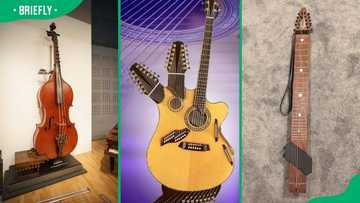10 traditional Japanese instruments: which is the most famous?
Japan is known for its impressive culture that permeates many aspects of daily life, with music being a significant influence. Amidst rapid technological and cultural change, the country has a rich musical tradition with a diverse array of traditional instruments, each contributing to various genres of music and performance. Discover the different traditional Japanese instruments.
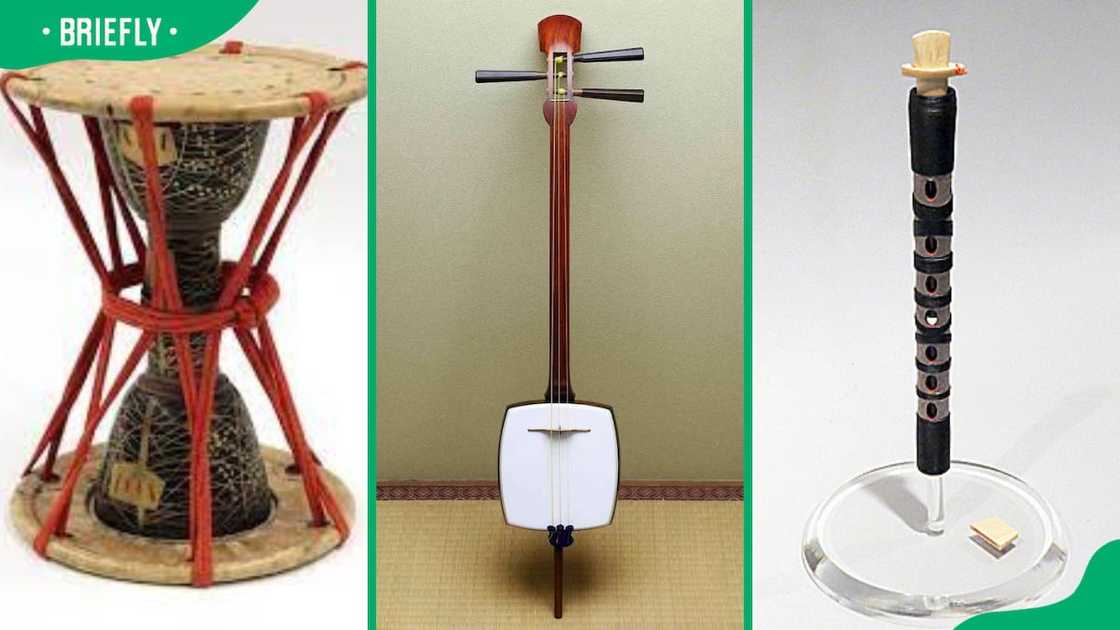
Source: UGC
These instruments play vital roles in traditional Japanese music genres, ranging from court music and classical compositions to regional folk tunes and theatrical performances. Additionally, some instruments have found their way into contemporary and experimental music, showcasing the dynamic evolution of Japanese musical traditions.
10 traditional Japanese instruments
Music plays a central role in the heart of Japanese culture, and this context has produced a distinctive variety of musical instruments also played by contemporary musicians. These instruments contribute to Japan's diverse and rich musical heritage, reflecting the country's cultural history and traditions. Here are 10 traditional Japanese instruments:
1. Shamisen
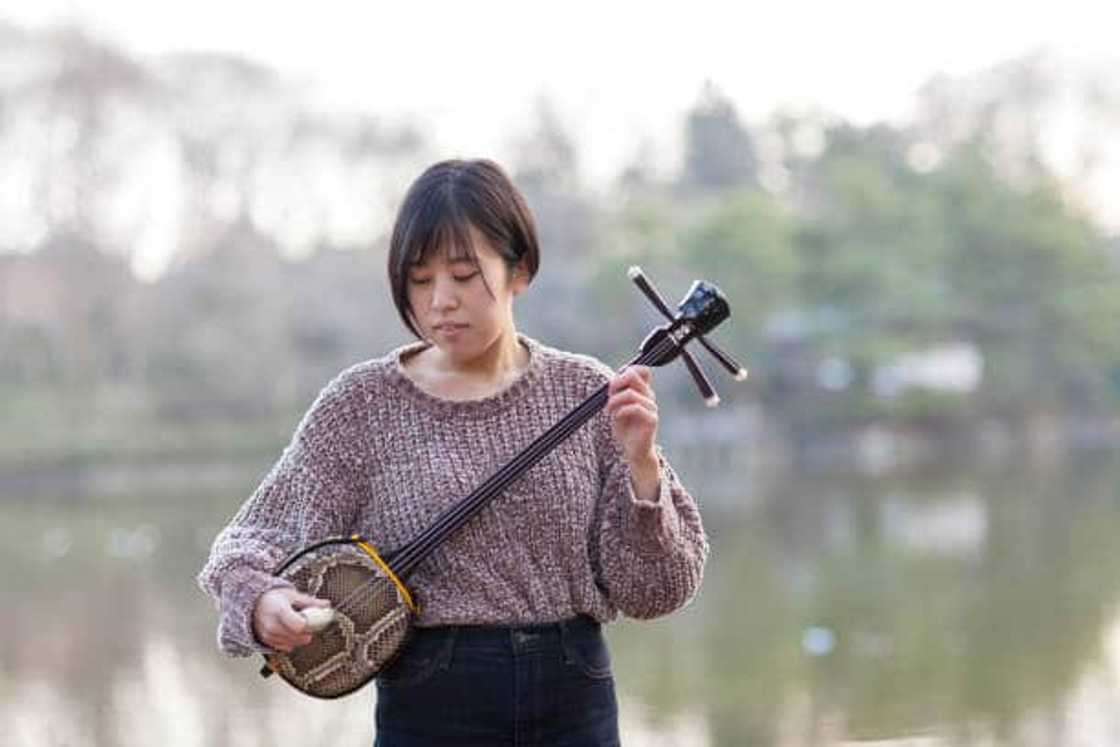
Source: Getty Images
Shamisen is a three-stringed instrument with a long neck resembling a guitar. It is often used in traditional Japanese music, including Kabuki and folk songs.
The body is typically made of wood, and the skin is stretched tightly over it. The skin is often from a cat or dog, although synthetic materials are used today.
2. Koto
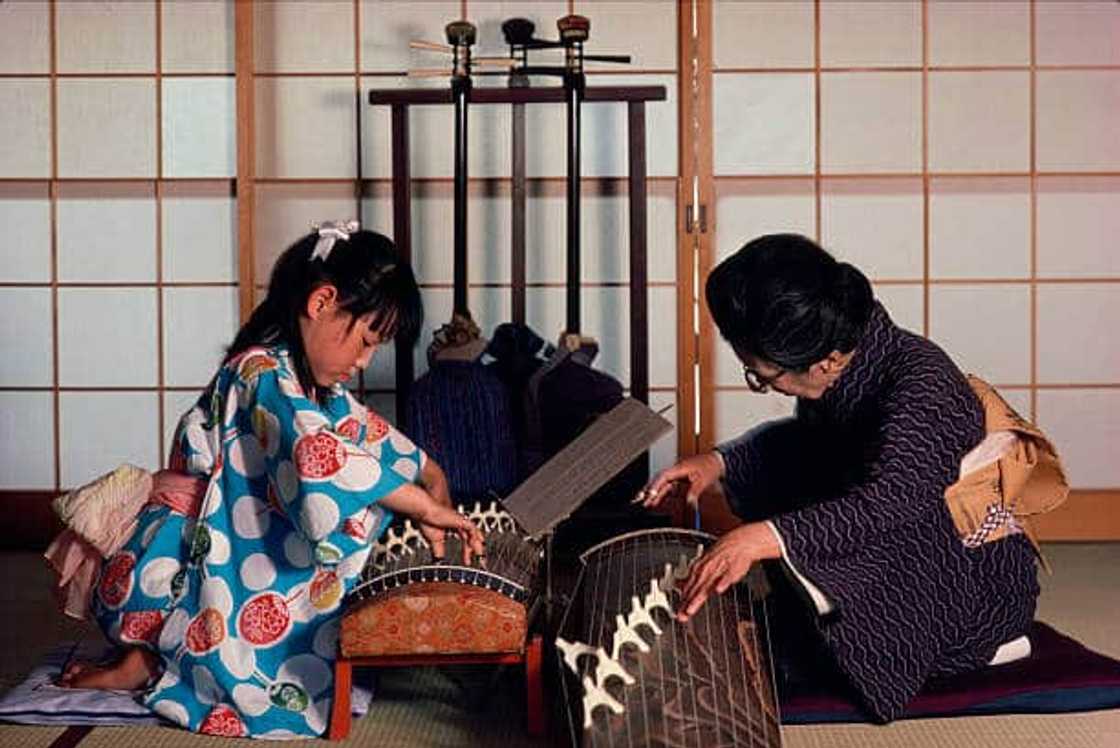
Source: Getty Images
Koto is one of the Japanese stringed instruments with 13 strings, played using picks called tsume. The koto uses a unique notation system known as koto notation (koto-biki), which indicates finger positions, string numbers, and other playing techniques.
The koto has a long, rectangular body made of paulownia wood. The body is covered with silk or synthetic strings.
3. Shakuhachi
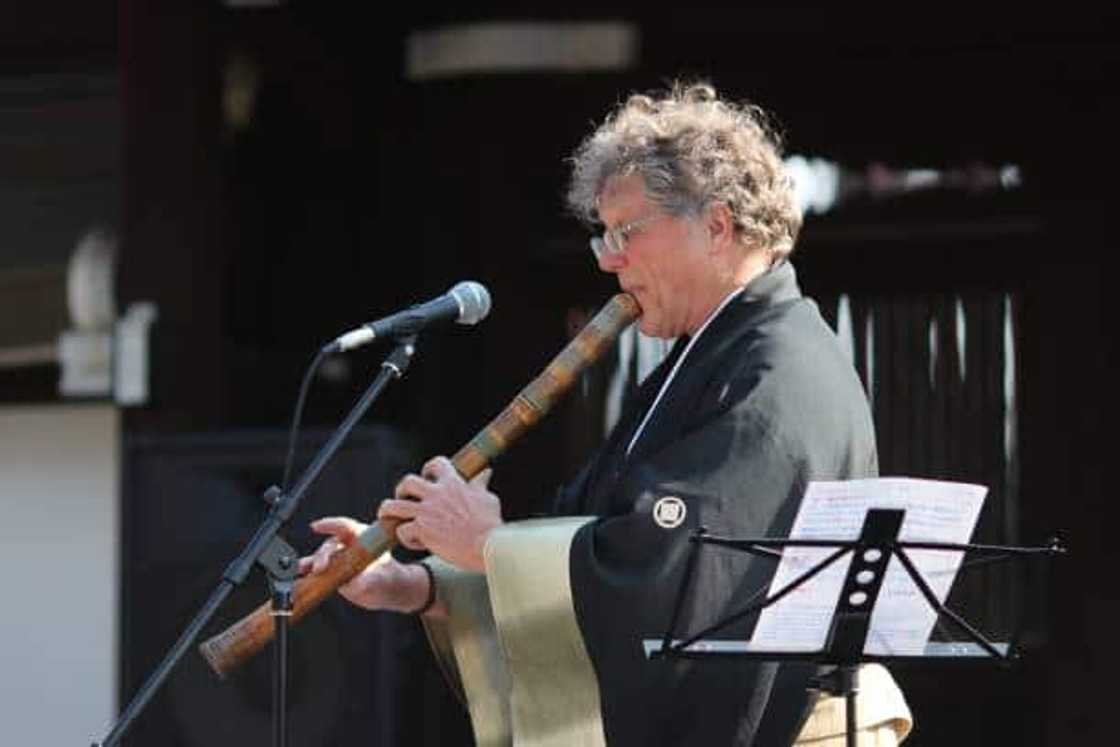
Source: Getty Images
The Shakuhachi is a traditional Japanese bamboo flute with a distinctive shape and a rich history. It is known for its unique, meditative sound and is often used in traditional Japanese music and Zen Buddhist practices.
It has four primary finger holes on the front and one thumb hole on the back. Unlike Western flutes, the Shakuhachi has a simple structure with no keys or metal parts.
4. Biwa
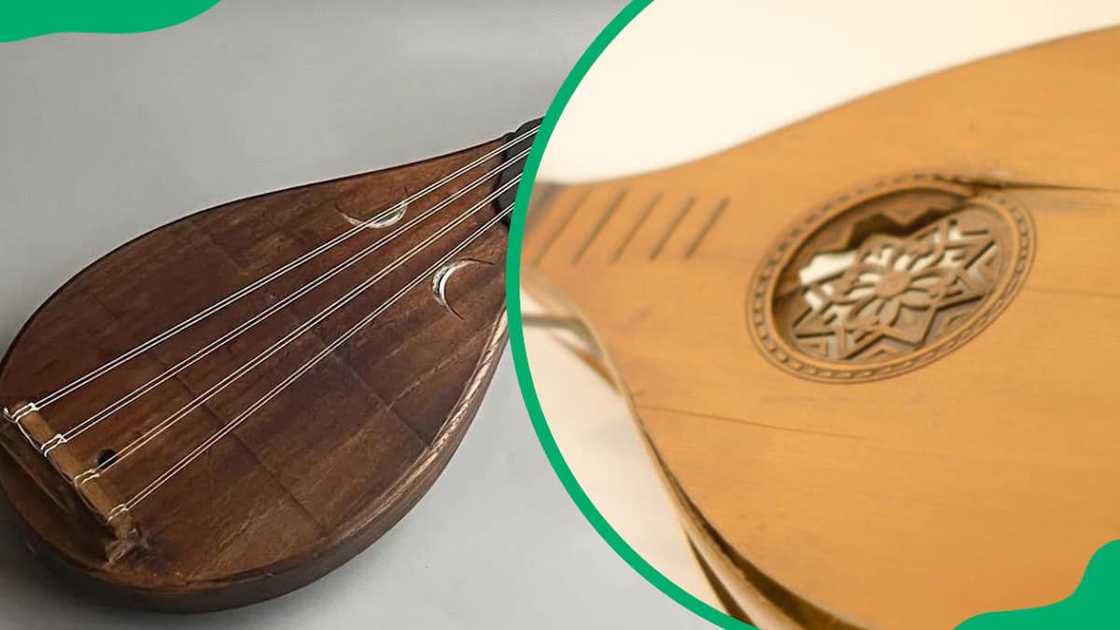
Source: UGC
Biwa is a traditional Japanese lute with four or more strings. There are various types of biwa, each with a unique shape and purpose.
The biwa has a pear-shaped body with a short neck and various strings. The body is often covered with a skin membrane, traditionally made from cat or dog skin, though synthetic materials are used today.
5. Taiko
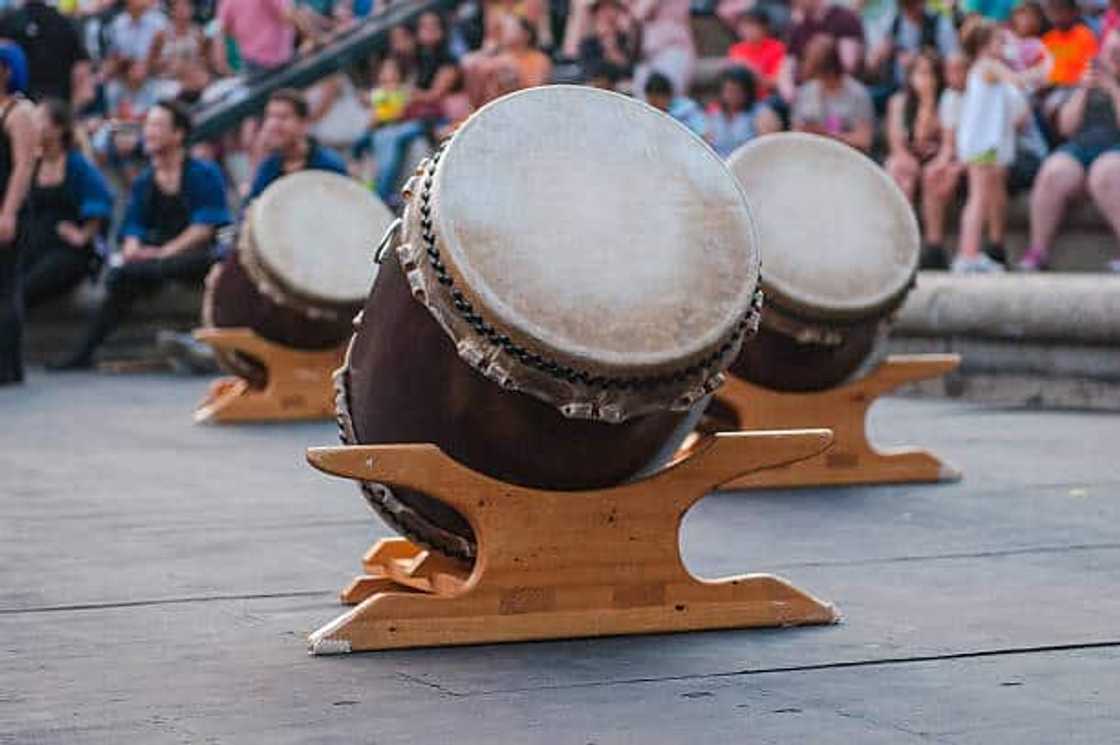
Source: Getty Images
Taiko drums are often used in festivals, religious ceremonies, and traditional performances, and they are one of the easiest Japanese instruments to learn. One popular type is the Nagado-daiko.
Taiko drums are played using bachi, usually made of wood and can vary in size and shape. Drummers combine striking the drumhead with the bachi and various techniques, including rolls, accents, and dynamics.
6. Fue
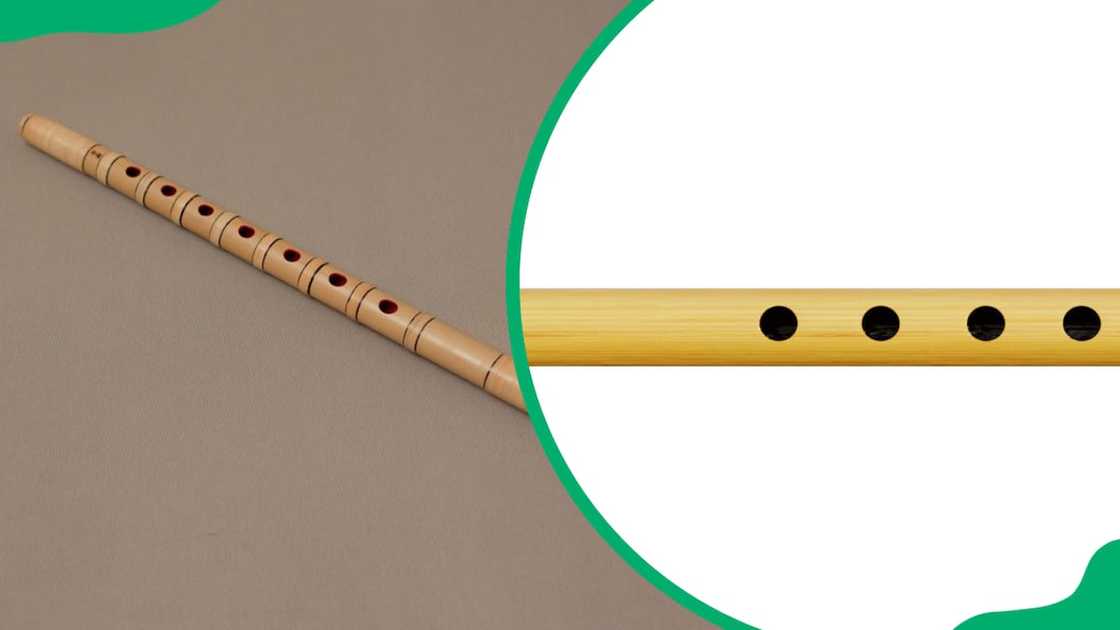
Source: UGC
Fue is a traditionally high-pitched bamboo Japanese instrument, though other materials, such as wood or plastic, may also be used in modern variations. It usually consists of a cylindrical tube with finger holes and a blowing edge.
The fue is played horizontally, and the player produces sound by blowing across the blowing edge and covering or uncovering the finger holes to change the pitch. The technique involves controlled breath and precise finger movements.
7. Sanshin
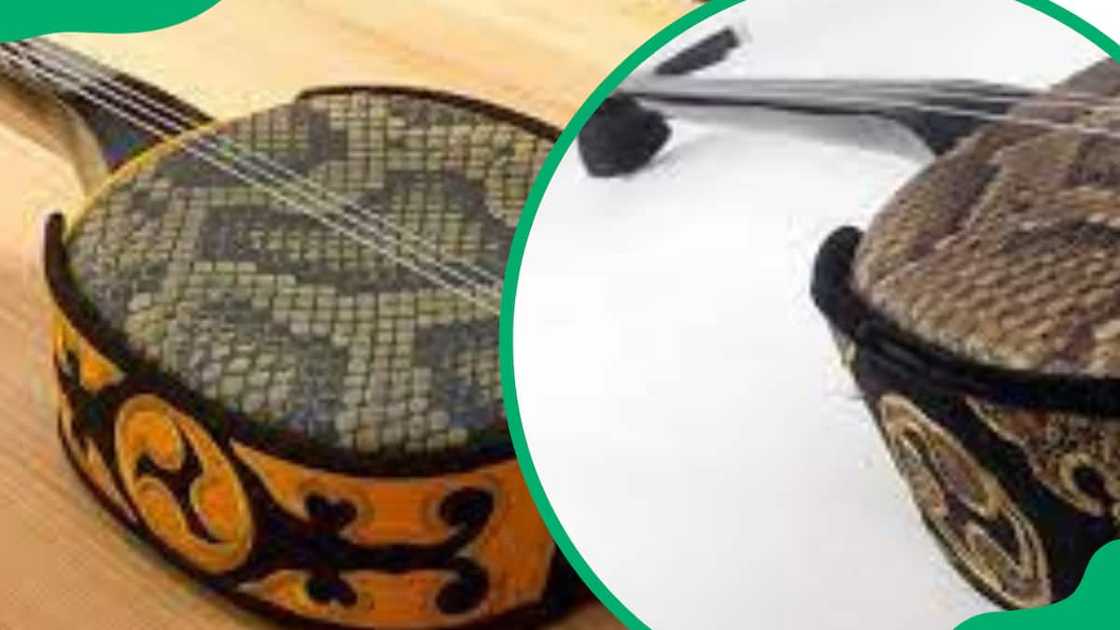
Source: UGC
The Sanshin is a traditional three-stringed musical instrument from Okinawa, Japan. It is a critical element of Okinawan music and has a unique sound and construction.
The Sanshin has a distinctive shape, featuring a snakeskin-covered body, a long neck, and three strings. The body is traditionally made from a hollowed-out wooden gourd covered with snake or synthetic skin.
8. Tsuzumi
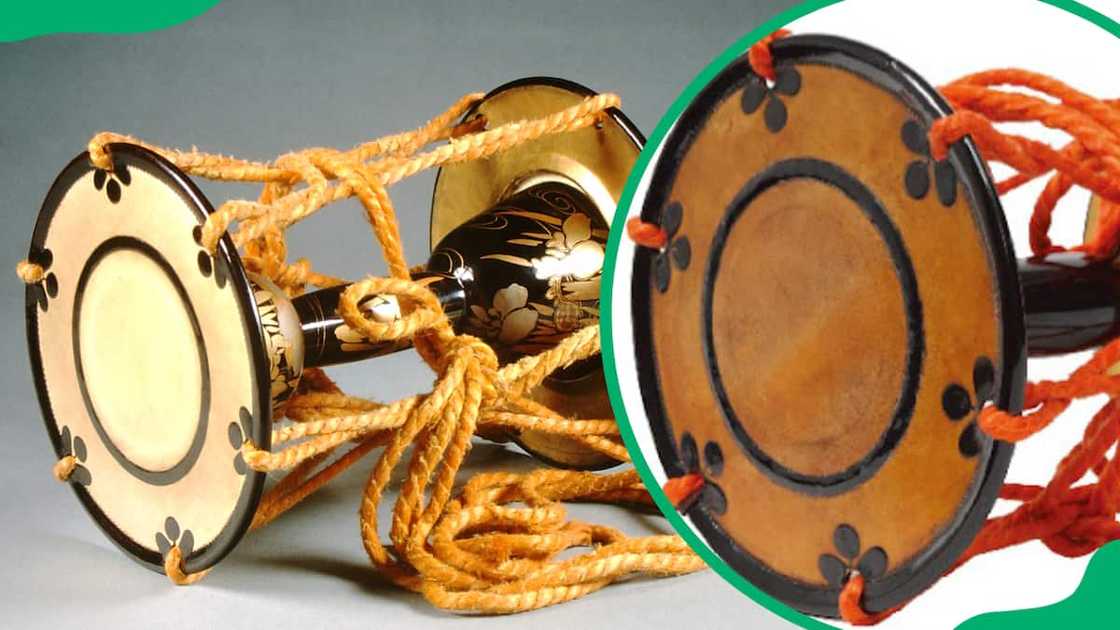
Source: UGC
The tsuzumi is a small hourglass-shaped drum with two heads, one larger than the other. In addition to its musical role, the tsuzumi holds symbolic significance in traditional Japanese culture, representing elements of both martial and courtly traditions.
The playing techniques for the tsuzumi are often conveyed through a system of notation called kata. This notation system provides detailed instructions on how to play specific drumming patterns and techniques.
9. Kokyū
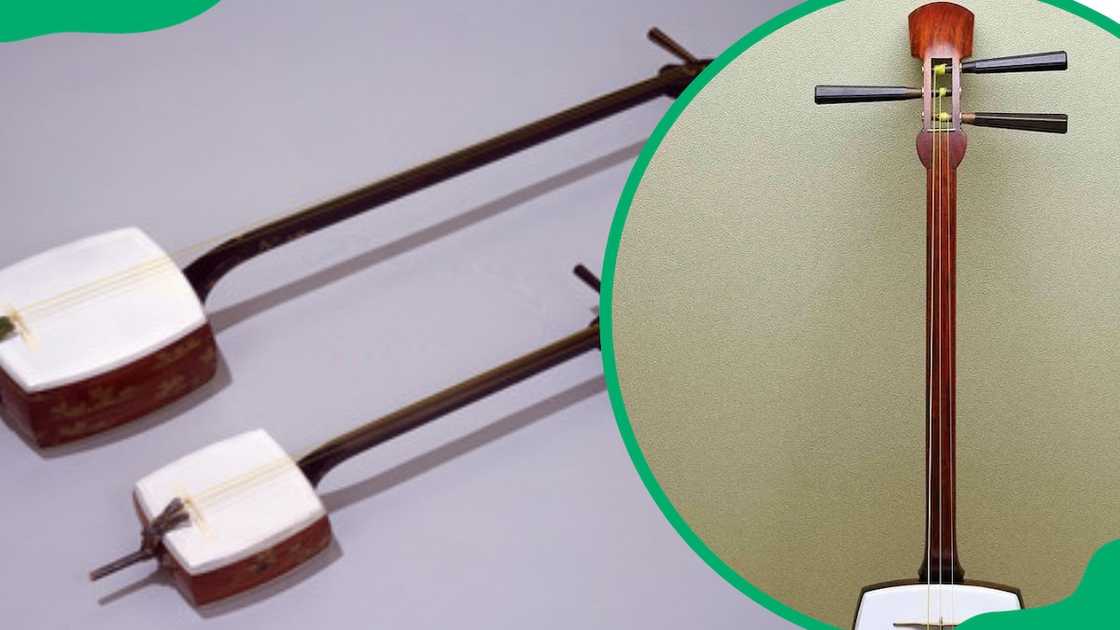
Source: UGC
The kokyū is a traditional Japanese bowed string instrument that belongs to the spike fiddle family. It has a unique and distinctive sound, and its name translates to a string instrument with a resonator.
The kokyū is typically tuned to a pentatonic scale, and a haunting and resonant quality characterizes its sound. The pitch can be altered by pressing the strings against the neck or adjusting the bowing technique.
10. Hichiriki
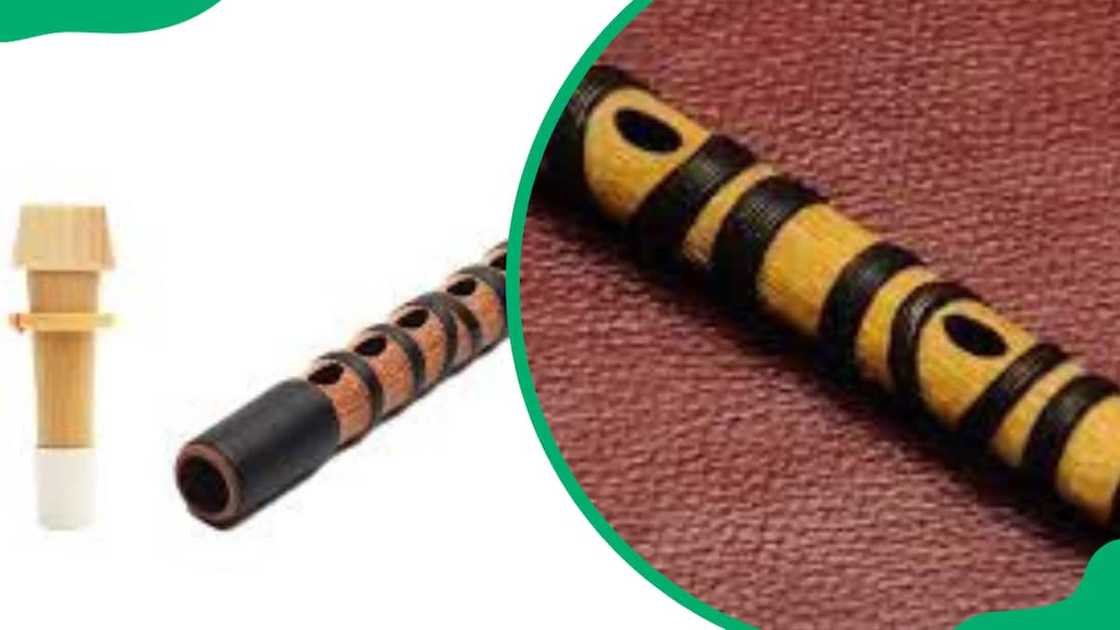
Source: UGC
The hichiriki is a traditional Japanese double-reed instrument and a vital component of the Japanese gagaku ensemble. Gagaku is a form of ancient Japanese court music and dance preserved for centuries.
The hichiriki is played by blowing air into the utaguchi while using finger and hand techniques to cover and uncover the finger holes. The player can produce a wide range of pitches and dynamic expressions.
What is the most famous Japanese instrument?
The shamisen is often considered one of the most famous and iconic traditional Japanese instruments. Its distinct sound and prominent role in various genres of Japanese music contribute to its recognition both within Japan and internationally. It is also one of the most plucked Japanese instruments.
Which Japanese instrument is called the dragon flute?
The ryūteki is a traditional Japanese transverse flute, sometimes called the dragon flute, due to its distinctive dragon-shaped headpiece. The name ryūteki translates to dragon flute in Japanese.
Listening to traditional Japanese instruments can give you a new perspective on Japanese culture. While the number of people playing these conventional instruments has decreased in recent years, the unique and beautiful souls still fascinate many.
READ ALSO: 20 famous African musical instruments: names and pictures
Briefly.co.za recently published an article on how different African communities have played a central role in developing global music. However, it is becoming harder to distinguish African musical instruments because they are slowly losing their native touches. Discover the famous African musical instruments.
Source: Briefly News

